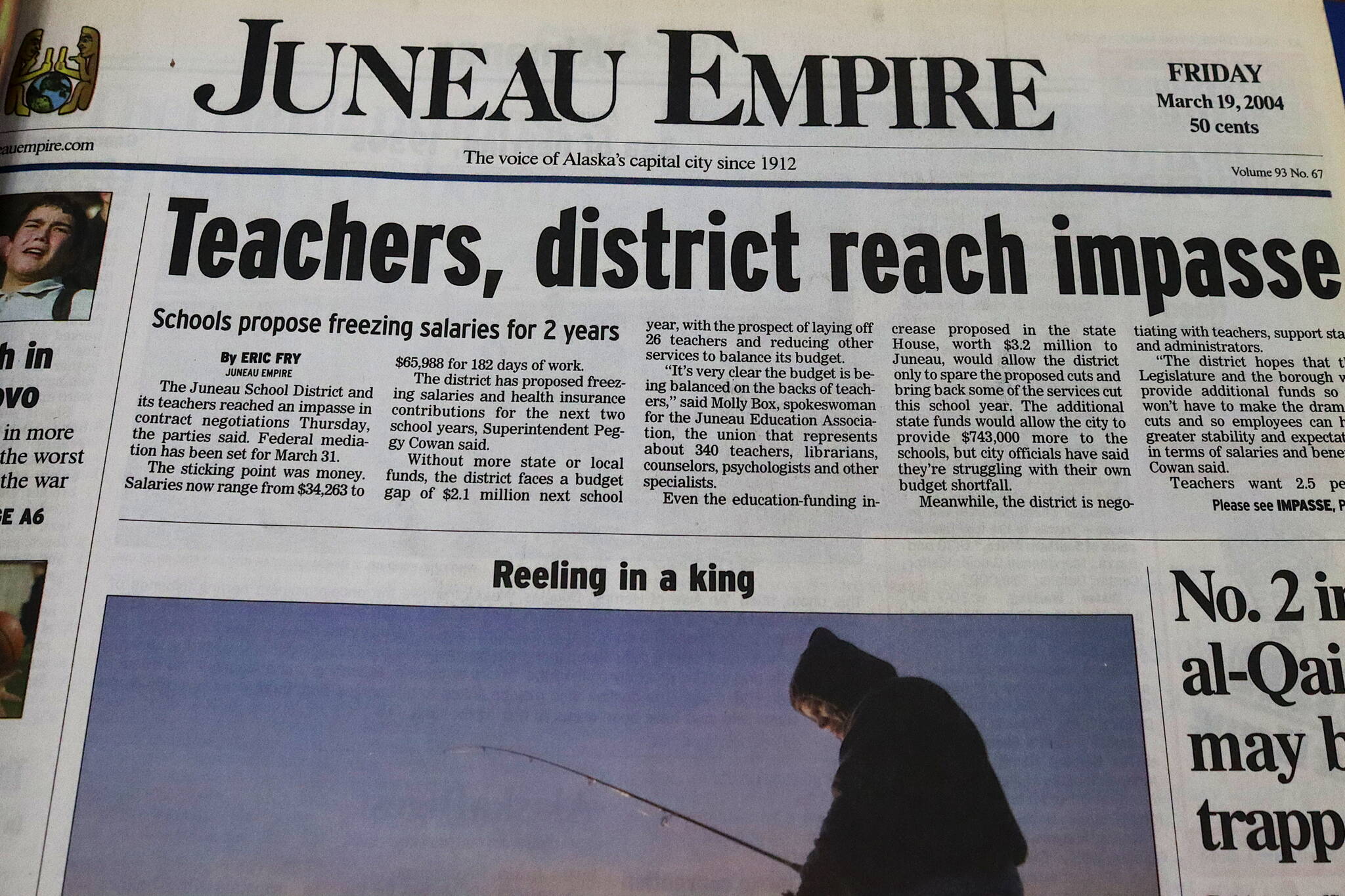Empire Archives is a series printed every Saturday featuring a short compilation of headline stories in the Juneau Empire from archived editions in 1984, 1994 and 2004.
This week in 1984, Weighing the needs of the Juneau City-Borough government against a desire not to raise mill rates, City-Borough Manager Pat Teague has recommended a $2.03 million increase in the 1985 fiscal year operating budget. At the same time, Teague recommends the city-borough initiate $2.3 million in capital projects for FY85, a large portion of which is to renovate city-borough properties. Capital projects money is needed to improve buildings such as the Johnson Youth Center, the municipal building and two city-borough harbors, according to the proposed budget. The proposed operating budget of $76.6 million reflects inflation and other increased costs compared to the $72.71 budget for the current fiscal year, Teague said. The recommended budget will not increase mill rates above current levels, he said. The proposed mill rates, determined by service area, range from 9.34 for North Douglas to 10.93 for Douglas Service Area 2.
Today the citywide rate is 10.16 mills.
Original Story: “Despite changes, no mill rate increases proposed,” by Christopher Jarvis. 3/20/1984.
This week in 1994, Roads linking Juneau with the rest of the world would cost from $175 million to $283 million to build, and millions more a year to maintain, based on the latest state study. With the new cost estimates in hand, the Department of Transportation is beginning work on an environmental assessment of the options for improving access to Juneau. “What we have completed is the most comprehensive reconnaissance-engineering study that’s ever been done on this issue,” said Jon Scribner, the department’s Southeast transportation director. The study evaluated land routes along the east and west sides of Lynn Canal and the Taku River Valley, plus expansion of the state ferry system. The study estimates a route along the east side of Lynn Canal would cost from $175 million to $225 million for a 58-mile, two-lane paved road and two shuttle ferries, Scribner said, For the less expensive option the ferries would travel two miles to Haines from the south side of the Katzehin River. The east-side route would cost about $7.7 million a year to maintain, the study said. Building a road along the west side of Lynn Canal from near William Henry Bay — about 40 miles northwest of Juneau — to Haines would cost about $175 million to build and $10.1 million in annual maintenance, Scribner said.
Today a road connecting Juneau to the outside world remains a distant possibility, but a ferry terminal at Cascade Point — 30 miles north of the current Auke Bay Ferry Terminal — may be ready for limited operation as soon as next year for service to Skagway and Haines. However, members of the Alaska Marine Highway Operations Board are questioning the practicality of such a facility, stating it would make access more difficult for many passengers, especially those not driving vehicles to the terminal or during poor weather.
Original Story: “Study pegs cost of roads from Juneau,” by Tim Huber. 3/18/1994.
This week in 2004, the Juneau School District and its teachers reached an impasse in contract negotiations Thursday, the parties said. Federal mediation has been set for March 31. The sticking point was money. Salaries now range from $34,263 to $65,988 for 182 days of work. The district has proposed freezing salaries and health insurance contributions for the next two years, Superintendent Peggy Cowan said. Without more state or local funds, the district faces a budget gap of $2.1 million next school year, with the prospect of laying off 26 teachers and reducing other services to balance its budget. Even an education funding increase proposed in the state House, worth $3.2 million for Juneau, would only allow the district to spare the proposed cuts and bring back some of the services cut this school year. The additional state funds would allow the city to provide $743,000 more to the district, but city officials have said they’re struggling with their own budget shortfall.
Today the school district is in a deeper financial hole, resulting in a budget cutting 12% of staff and consolidating schools beginning with the coming school year being passed by the Juneau Board of Education. The Legislature passed a bill that would have provided about $5.2 million extra to the district and prevented many of the layoffs, but members failed to override a veto by Gov. Mike Dunleavy. The city, meanwhile, is going beyond the legally allowed contribution to the district through a novel agreement to take over some “shared costs” of facilities used by both the city and district for “non-instructional” purposes such as sports and cultural activities.
Original Story: “Teachers, district reach impasse,” by Eric Fry. 3/19/2004.

